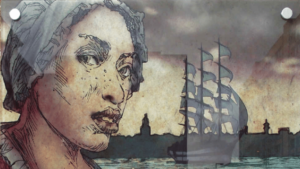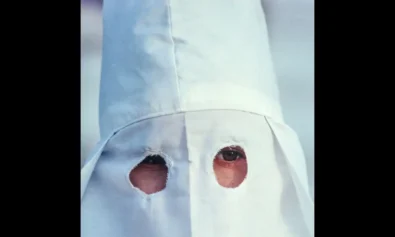
“Never Caught: The Washingtons’ Relentless Pursuit of Their Runaway Slave, Ona Judge” by Erica Armstrong Dunbar
Through her latest work, historian and African-American studies professor Erica Armstrong Dunbar uncovers the untold narrative of an enslaved woman who successfully escaped the confines of George Washington’s Philadelphia mansion to freedom in 1796. The escapee, a 22-year-old slave girl named Ona Judge, was never caught and lived out her days as a fugitive of the law.
Dunbar said she came across Judge’s shocking story while thumbing through old Philadelphia newspaper archives. It’s been more than 20 years since the University of Delaware professor stumbled upon the young woman’s story, but she’s spent the past eight years trying to piece together details of Judge’s journey for her new book, titled “Never Caught: The Washingtons’ Relentless Pursuit of Their Runaway Slave, Ona Judge.”
“I came across the advertisement for a slave who had run away from the president’s house,” Dunbar said, as she recalled flipping through the pages of an old newspaper nearly a decade ago. “I thought, ‘Who is this woman they’re referring to, Ona Judge?’ And, ‘Wait a minute! The president is advertising for a runaway slave? In Philadelphia? In 1796? Why don’t I know this story?'”
Dunbar expressed the need to introduce the world to a woman like Ona, and her eye-opening novel did just that. It detailed the enslaved woman’s decision to risk it all and escape to her freedom in Portsmouth, N.H., while former President George Washington and his wife, Martha, utilized every resource they had to catch her and bring her back.

A plaque depicting Ona Judge Staines on the wall of the President’s House in Philadelphia
In 1773, the same year Ona was born, the Washingtons owned nearly 150 enslaved Black workers, according to Dunbar’s book. When he was elected President of the U.S. 10 years later and called to the nation’s capital (which was Philly at the time), he and his wife took a select group of enslaved workers with them, including Judge.
During this time, Pennsylvania was in the process of abolishing slavery and the state law mandated that any enslaved person brought into the commonwealth for over six months be emancipated, Philly.com reported. To keep from having to give up his slave labor, Washington came up with ploys and excuses that allowed him to secretly shuttle enslaved Blacks in and out of the state.
Judge resided with her masters in Philadelphia for six years — until she found out she was to be sent down south to serve Martha’s granddaughter. With abolitionists and freedmen helping her along the way, Judge managed to escape the Washingtons. Her getaway sparked an intense manhunt, with George utilizing his political and personal connections to track her down.
“This was a woman who found the courage to defy the President of the United States, the wit to find allies, to escape, to out-negotiate, to run and to survive,” Dunbar told Black Perspectives. “Judge’s life exposes the sting of slavery and the drive of defiance.”

Historian and University of Delaware Black studies professor Erica Armstrong Dunbar.
“This book changes the traditional narrative about runaways and adds to a growing literature about the lives of fugitives,” she continued. “It is a unique project in that it examines the life of someone who escaped slavery before the era of the ‘Underground Railroad.‘ It forces scholars to re-imagine the institution of slavery and more importantly, it prompts scholars to re-imagine Black freedom in the early decades of the 19th century.”
Finding the missing pieces of Ona’s story was no easy task, however. Dunbar spent years sifting through old newspapers for marriage and death announcements, reviewing old ship records and census data, and reading over two interviews Judge did near the end of her life with abolitionist newspapers, Philly.com reported. The Black studies professor acknowledged that piecing together Judge’s historic past was that much harder because the escapee lived most of her life trying not to be found.
“Following Ona from the South to the North, we see that there’s no straight line to freedom. Each state was working it out differently,” Dunbar explained. “She was never free; she was simply never caught. She remained a fugitive until the day she died in 1848.”
Despite her lack of resources, Dunbar was successfully able to tell the unknown story of an enslaved Black woman who had the gall to escape the president of the United States in search of freedom. It’s a narrative that won’t be found in the average history book.


